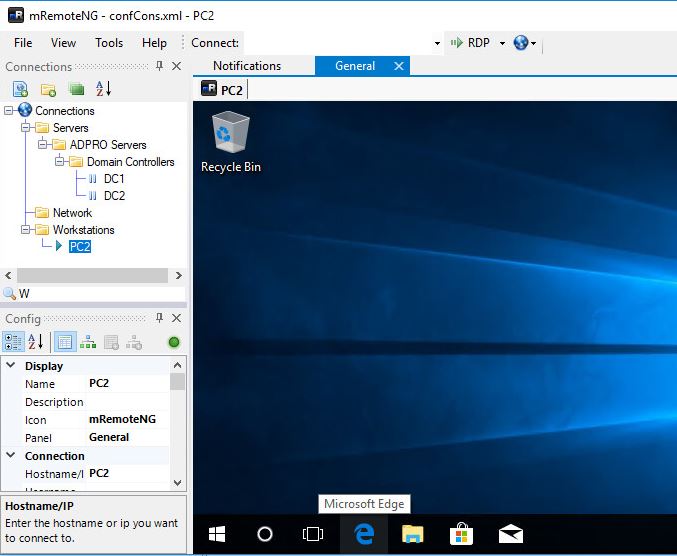PLEASE BE ADVISED
Can RDP clients launch a remote application and then only display that application (and not the desktop)? The application would appear fullscreen within the client and if the application were closed the session would end.
If you are experiencing a “black screen” when you login, please contact NCI at Your Service.
NCI Remote Apps
NCI Remote Apps provides access to your HOME (H:) and GROUP (L:) drives, email, Microsoft services like Teams, SharePoint Online and OneDrive, and various applications (Excel, PowerPoint, Word, Firefox, Chrome, etc.) from remote locations, such as while on travel or working from home. The speed of your Internet connection (dial-up, high-speed Internet) will affect how well these resources work for you.
To watch any NIH Virtual Town Halls or NCI All Hands Meetings, please exit out of NCI Remote Apps from the government-furnished or personally owned device that you're currently using and then stream the webcast from the same device. Regardless of the device you are using, you will be able to access the webcast without NCI Remote Apps.
- This works reasonable well except that the Remote Desktop Service on the PC requires that I can only be logged in either via the Remote Desktop app OR the PC itself. Since there are some operations that cannot be performed via RDP - attaching to a VPN being one of them - it would be nice if I could just leave the PC logged in and operate it via.
- Specifies whether the Remote Desktop client should check the remote computer for RemoteApp capabilities. 0 - Check the remote computer for RemoteApp capabilities before logging in. 1 - Do not check the remote computer for RemoteApp capabilities.Note: This setting must be set to 1 when connecting to Windows XP SP3, Vista or 7 computers with.
Accessing Remote Apps From a non-Windows Device
Before logging into Remote Apps, non-Windows users should first download and install the free Microsoft Remote Desktop software for their device using one of the links below:
Apple Mac desktop and laptop computers(Microsoft download)
Apple iPad and iPhone(iTunes download)
Android devices(Google Play download)
Logging Into Remote Apps
Log in with Microsoft Authenticator App
(Azure MFA)
 How to use the Authenticator App with NCI Remote Apps
How to use the Authenticator App with NCI Remote AppsTake Training
Before using NCI's Remote Apps, you are required to take the 'Securing Remote Computers' portion of the Security Awareness Training available at http://irtsectraining.nih.gov and electronically sign the User Certification Agreement that can be accessed at the end of the training.
Personally Owned Equipment
If you are using Windows-based Personally Owned Equipment (POE), you are responsible for purchasing and installing an ID badge/PIV reader (also known as a smart card reader).
Note: Some laptops are equipped with an internal ID badge/PIV reader. Please refer to the How to Access NCI Remote Apps knowledge article for a list of supported card readers on can purchase for use with POE.
Review the User Guidelines


- Remote Apps is designed as a temporary access solution.
- Data must be saved in your OneDrive or Shared drive; do not store data within RemoteApps as local files.
- The installation of other software/applications are not permitted.
- Remote Apps profiles not accessed in 6 months will be deleted.
- Once deleted, all data and settings (saved documents, bookmarks, etc.) are deleted. A new profile will be created upon your next login.
Getting Help
If you require assistance or encounter problems, please:
- Put in a ticket at NCI at Your Service
- Visit NCI at Your Service Knowledge Base (KB) to view our full list of services, How To guides, and policies.
- Call us at 301-496-4357, 866-319-4357, or 301-496-8294 (TTY) Monday-Friday: 6:00 a.m.-6:00 p.m. ET and limited support Saturday-Sunday: 8:30 a.m.-5:00 p.m. ET and Monday-Friday: 6:00 p.m.-12:00 a.m. ET
Download Remote Desktop Windows 10
Department of Health and Human Services | National Institutes of Health | National Cancer Institute | USA.gov
Remoteapp Rdp Settings
NIH...Turning Discovery Into Health